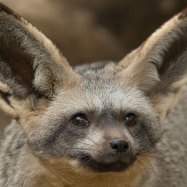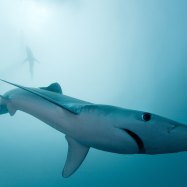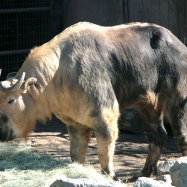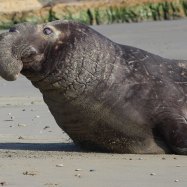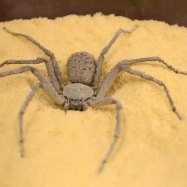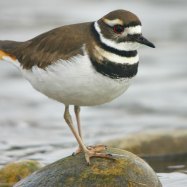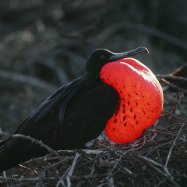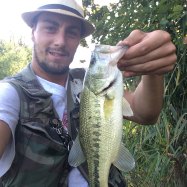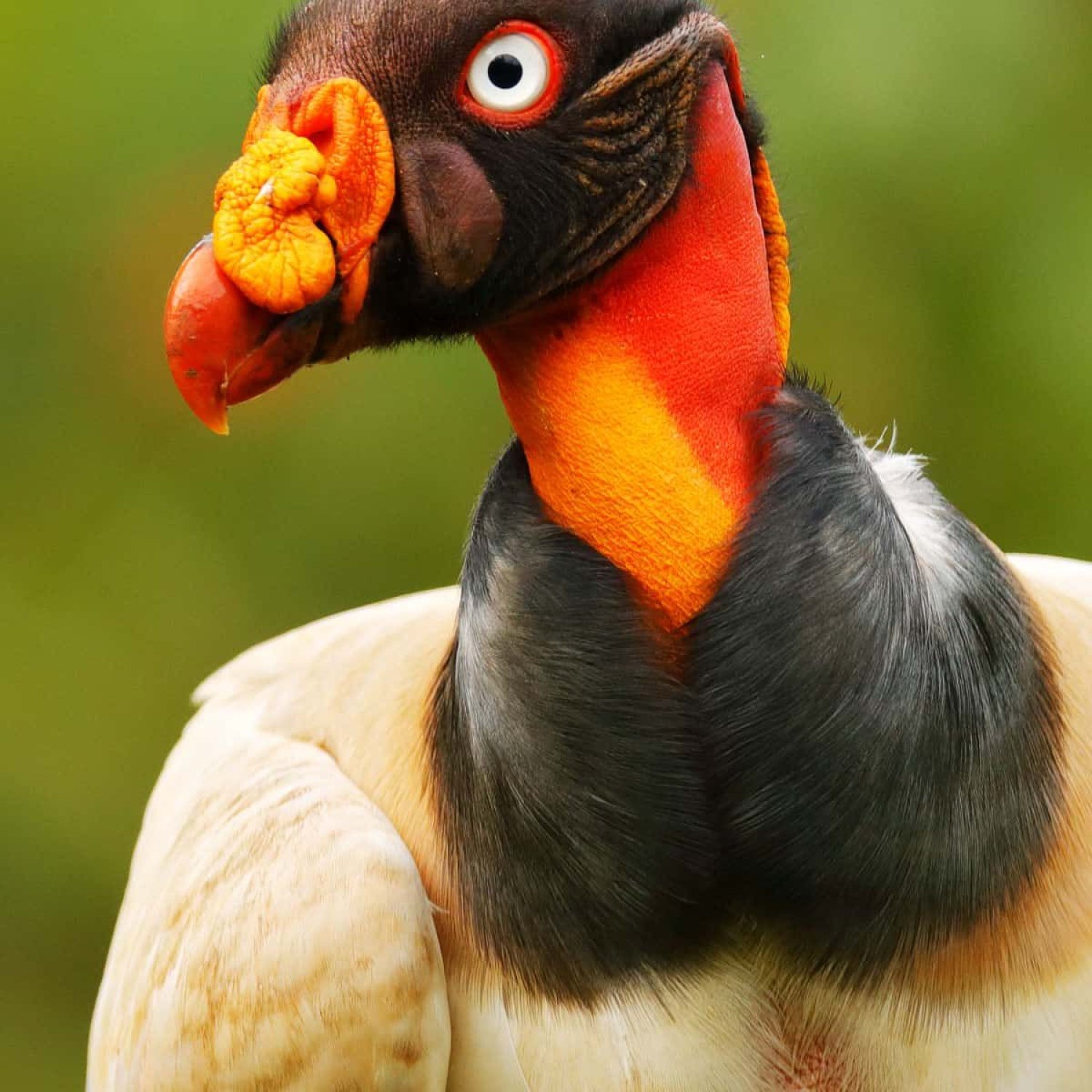
King Vulture
64 to 81 cm (25 to 32 in)
The King Vulture, found in Central and South America, is a majestic bird with a large and bulky body, short tail, and small beak. It can reach a length of 64 to 81 cm (25 to 32 in) and belongs to the Cathartidae family. These impressive scavengers play a vital role in their ecosystem by disposing of carrion. Their striking appearance and important role make King Vultures an essential part of the animal kingdom. #KingVulture #CentralAmerica #SouthAmerica #cathartidae
Animal Details Summary:
Common Name: King Vulture
Kingdom: Animalia
Habitat: Tropical and subtropical forests
Taking a Closer Look at the Magnificent King Vulture
The King Vulture, scientifically known as Sarcoramphus papa, is a majestic bird that is found in the tropical and subtropical forests of Central and South America. It is part of the Animalia kingdom, Chordata phylum, Aves class, and belongs to the Cathartiformes order and Cathartidae family.This stunning bird is widely known for its unique appearance, making it stand out from other vultures. In this article, we will take a closer look at the features and behaviors of the King Vulture, one of the most fascinating birds in the world King Vulture.
Habitat and Geographical Distribution
The King Vulture is primarily found in the tropical and subtropical forests of Central and South America. It inhabits a range of countries, including Belize, Bolivia, Brazil, Colombia, Costa Rica, Ecuador, El Salvador, French Guiana, Guatemala, Guyana, Honduras, Mexico, Nicaragua, Panama, Paraguay, Peru, Suriname, Trinidad and Tobago, the United States, and Venezuela.This bird thrives in warm, humid environments, where it can easily find food and water. It tends to avoid dense rainforests and instead prefers open woodlands, savannas, and scrublands. The King Vulture is often seen soaring high in the skies or perched on tree branches, with its keen eyes scanning the ground for food.
Feeding Habits
As a member of the Cathartidae family, the King Vulture is a carrion feeder, which means it feeds on dead animals. It plays a vital role in maintaining the balance of the ecosystem by removing diseased carcasses and preventing the spread of diseases.The King Vulture has excellent vision and can spot food from great heights. It has also been observed using its sharp beak to break through tough skin and reach the meat inside Kudzu Bug. This bird is also known to be a dominant scavenger, often displacing other vultures to access food first.
Appearance and Body Shape
One of the most distinctive features of the King Vulture is its vibrant coloration. While most vultures have dull, dark-colored feathers, the King Vulture stands out with its mostly white body, adorned with grey and black feathers on its wings and tail. Its head and neck are also covered in bright red, orange, and yellow fleshy skin, adding to its unique and striking appearance.The King Vulture has a large and bulky body, with a wingspan of up to 1.7 meters (5.5 feet). It has a short tail and a small, hooked beak, which is adapted for tearing meat. While it may appear bulky, this vulture is an excellent flyer, with its strong wings allowing it to soar for long periods without flapping.
Behavior and Social Structure
The King Vulture is a social bird that is often seen in groups, referred to as a parliament or a venue. These groups can comprise up to 25 individuals and include both adults and juveniles. While these vultures may compete for food, they are generally peaceful and can even share a meal without any conflicts.This bird is also known for its unique courtship rituals, where males will engage in elaborate displays to attract a female. Once the female chooses a mate, they will build a nest together, usually on a tall tree branch. The female will lay one egg, and both parents will take turns incubating it until it hatches.
Threats and Conservation Efforts
The King Vulture is currently listed as "Near Threatened" on the IUCN Red List, with its population decreasing due to various threats. One of the biggest threats to this bird is habitat loss, as deforestation and human encroachment continue to destroy its natural habitat.Additionally, the King Vulture is also vulnerable to poisoning, either through consuming contaminated carcasses or coming into contact with pesticides. As scavengers, they are at risk of ingesting toxins that have accumulated in the bodies of animals they feed on.
Fortunately, there are ongoing conservation efforts to protect the King Vulture and its habitat. In many countries, it is legally protected from hunting and trade, and there are also initiatives to educate local communities on the importance of this species and the need for conservation.
In Conclusion
The King Vulture is a fascinating bird that has captured the attention of many with its unique appearance and behaviors. It plays a crucial role in the ecosystem and is a significant indicator of the health of its environment. As such, it is essential to continue efforts to protect and conserve this magnificent bird and its habitat, ensuring that future generations can also appreciate its beauty.

King Vulture
Animal Details King Vulture - Scientific Name: Sarcoramphus papa
- Category: Animals K
- Scientific Name: Sarcoramphus papa
- Common Name: King Vulture
- Kingdom: Animalia
- Phylum: Chordata
- Class: Aves
- Order: Cathartiformes
- Family: Cathartidae
- Habitat: Tropical and subtropical forests
- Feeding Method: Carrion feeder
- Geographical Distribution: Central and South America
- Country of Origin: Belize, Bolivia, Brazil, Colombia, Costa Rica, Ecuador, El Salvador, French Guiana, Guatemala, Guyana, Honduras, Mexico, Nicaragua, Panama, Paraguay, Peru, Suriname, Trinidad and Tobago, United States, Venezuela
- Location: Central and South America
- Animal Coloration: Mostly white with grey and black feathers, bright red, orange, and yellow fleshy head and neck
- Body Shape: Large and bulky body, short tail, and small beak
- Length: 64 to 81 cm (25 to 32 in)
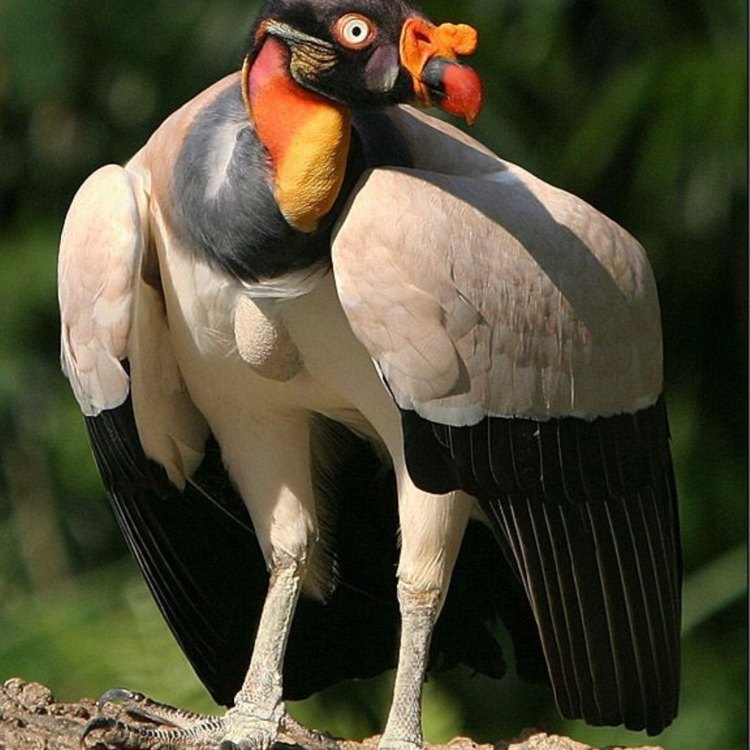
King Vulture
- Adult Size: 64 to 81 cm (25 to 32 in)
- Average Lifespan: Up to 30 years
- Reproduction: Sexual reproduction
- Reproductive Behavior: Monogamous
- Sound or Call: Loud, guttural calls and grunting sounds
- Migration Pattern: Non-migratory
- Social Groups: Solitary or in small groups
- Behavior: Scavenger, often seen soaring in groups
- Threats: Habitat loss, illegal hunting, poisoning from ingesting lead ammunition in carcasses
- Conservation Status: Near Threatened
- Impact on Ecosystem: Important scavengers, help prevent the spread of diseases
- Human Use: Tourist attraction and appreciation for its unique appearance
- Distinctive Features: Brightly colored head and neck, large size
- Interesting Facts: King Vultures have a powerful beak that allows them to tear apart tough hides of carcasses.
- Predator: No natural predators
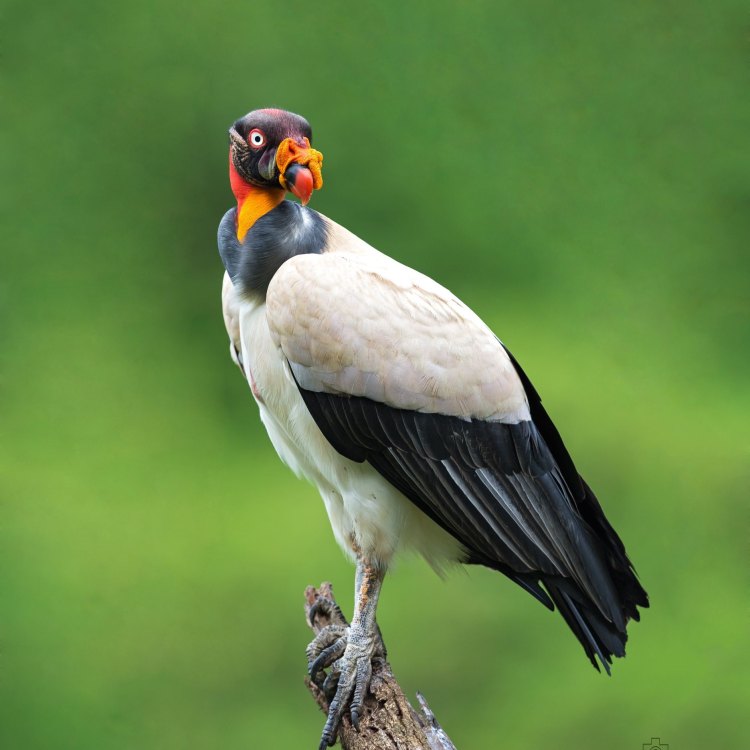
Sarcoramphus papa
The Enigmatic King Vulture: Solitary Scavengers with a Fascinating Appearance
In the vast expanse of the tropical rainforests of Central and South America, a majestic and elusive bird can be seen soaring high in the sky. Its distinctive appearance, with bright colors and a large size, captures the attention of all who see it. This is the King Vulture, a bird that possesses a fascinating combination of physical and behavioral traits that make it a unique and important species in its ecosystem.Adult King Vultures can reach a size of 64 to 81 cm (25 to 32 in) with an impressive wingspan of up to 2 meters (6 feet) PeaceOfAnimals.Com. They are considered the largest of the New World vultures, but what truly makes them stand out is their striking appearance. Their head and neck are covered in a variety of colors, including orange, red, yellow, and purple. They have a large black beak and white feathers on their body and upper wing surfaces. These vibrant colors serve as a distinct marker for the species and make them easily recognizable.
But what makes their appearance even more intriguing is the fact that they have no natural predators. This is due to the combination of their large size and powerful beak that allows them to tear apart the tough hides of carcasses. This is especially useful as they play a vital role as scavengers in their ecosystem.
King Vultures have an average lifespan of up to 30 years in the wild. They reach sexual maturity at around 5 years of age and reproduce through sexual reproduction Kinabalu Giant Red Leech. One interesting fact about their reproductive behavior is that they are monogamous, meaning they mate for life. This bond between a male and female King Vulture is a unique and admirable trait, as they work together to build and maintain their nest.
During breeding season, male vultures will perform aerial acrobatics to attract a mate. Once a female has been courted, they will build a large stick nest in a tree or cliff, lined with softer materials like leaves and feathers. The female will lay one to two eggs and both parents will take turns incubating them for approximately 55 days before they hatch. They then work together to feed and raise their young until they are ready to leave the nest at around 3 months old.
Despite their monogamous breeding behavior, King Vultures are mostly solitary, only coming together during mating season or when large carcasses are available. They are also known to gather in small groups while soaring in search of food. Their diet mainly consists of carrion (dead animals), making them important scavengers in their ecosystem.
The loud, guttural calls and grunting sounds of King Vultures can often be heard as they soar high in the sky, searching for their next meal. While they are mostly non-migratory, they have been known to travel short distances in search of food. However, they are highly territorial and will defend their feeding area from other vultures.
Sadly, these magnificent birds are facing threats to their survival. Habitat loss, illegal hunting, and poisoning from ingesting lead ammunition in carcasses are just some of the dangers they face. As a result, the International Union for Conservation of Nature (IUCN) has listed them as Near Threatened in their Red List of Threatened Species. This means that if conservation efforts are not put in place, they could soon become an endangered species.
But the consequences of losing these majestic birds will go beyond their own species. King Vultures play a crucial role in their ecosystem by helping to prevent the spread of diseases. As scavengers, they feed on carcasses that could otherwise become breeding grounds for bacteria and viruses. This makes them important caretakers and contributors to maintaining the balance in their environment.
The King Vulture also holds great cultural significance in some regions. In Mayan culture, it was believed that the vulture had the power to connect the world of the living and the dead. In modern-day, they are a tourist attraction and a source of appreciation for their unique appearance. In some countries, they are even used as symbols on flags and national emblems.
With their brightly colored head and neck, large size, and important role in their ecosystem, the King Vulture truly is a fascinating species. Their solitary nature and powerful beak make them stand out among other vultures, and their monogamous breeding behavior adds to their enigmatic qualities. It is crucial that we raise awareness about the threats they face and take action to protect and conserve these magnificent birds. For if we lose them, we not only lose a beautiful species, but we also disrupt the balance of nature.
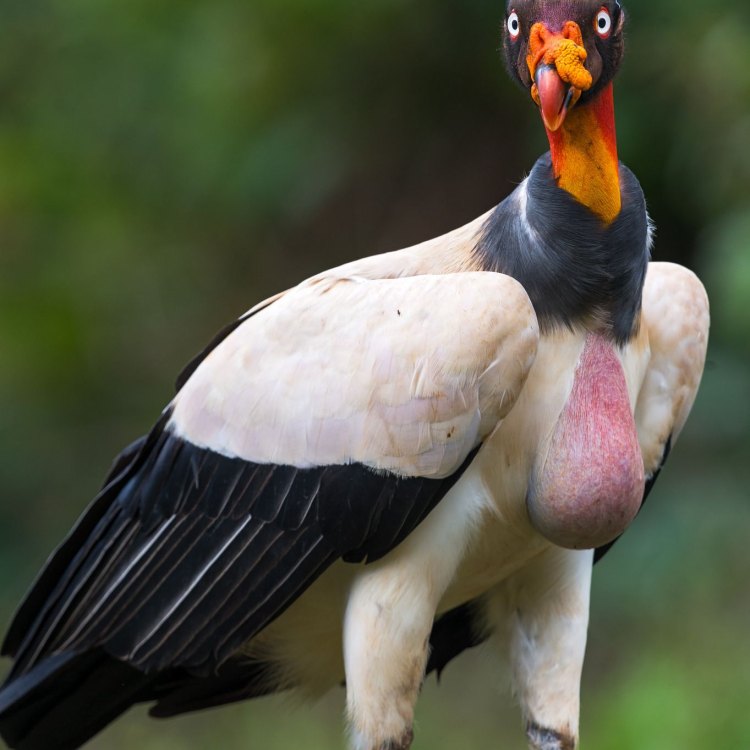
Taking a Closer Look at the Magnificent King Vulture
Disclaimer: The content provided is for informational purposes only. We cannot guarantee the accuracy of the information on this page 100%. All information provided here may change without prior notice.

